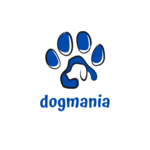Raw Feeding Made Easy: Steps to Transition Your Dog in 2024
Transitioning your dog to a raw food diet can seem daunting, but with careful planning and a methodical approach, it can be a smooth and beneficial process for both you and your pet. Raw feeding, also known as a biologically appropriate raw food (BARF) diet, involves feeding dogs uncooked meat, bones, fruits, and vegetables. This method of feeding aims to mimic the natural diet of wild canines, offering numerous health benefits such as improved coat condition, cleaner teeth, and enhanced energy levels. Here are the steps to transition your dog to a raw food diet easily and safely.
Understanding the Benefits of Raw Feeding
Before diving into the transition process, it's important to understand why many pet owners are opting for raw feeding. A raw food diet is packed with essential nutrients that are often lost during the processing of commercial dog foods. Key benefits include:
1. Improved Digestion: Raw food is more digestible and can reduce issues such as bloating and gas.
2. Healthier Skin and Coat: The natural oils in raw meat help maintain a shiny, healthy coat.
3. Better Dental Health: Chewing raw bones can help clean teeth and reduce plaque buildup.
4. Increased Energy: Many dogs experience heightened energy levels and vitality on a raw diet.
5. Weight Management: Raw feeding can help maintain an ideal weight due to its high protein and low carbohydrate content.
Preparing for the Transition
Consult Your Veterinarian
Before making any significant changes to your dog’s diet, it’s essential to consult with your veterinarian. They can provide valuable insights and ensure that raw feeding is appropriate for your dog, especially if your pet has existing health conditions.
Research and Plan
Educate yourself on the nutritional requirements of dogs and how to meet them with a raw diet. There are many resources available, including books, online forums, and websites dedicated to raw feeding. Planning is crucial to ensure a balanced diet, as improper feeding can lead to nutritional deficiencies.
Gradual Transition
A sudden switch to raw food can cause digestive upset. A gradual transition over a week or two helps your dog’s digestive system adjust. Start by mixing a small amount of raw food with your dog’s current diet, gradually increasing the raw portion while decreasing the kibble.
Steps to Transition Your Dog
1. Start with Simple Proteins
Begin with a single protein source, such as chicken or turkey, which are generally well-tolerated. These meats are easy to digest and can help you monitor your dog’s reaction to the new diet. Avoid mixing proteins initially to identify any food sensitivities or allergies.
2. Introduce Raw Meaty Bones
Raw meaty bones are a staple of the raw food diet. They provide essential nutrients and help keep your dog’s teeth clean. Start with smaller, softer bones like chicken wings or necks. Always supervise your dog when they are eating bones to prevent choking.
3. Add Organ Meats
Organ meats, such as liver and kidneys, are nutrient-dense and should comprise about 10% of your dog’s diet. Introduce these gradually and in small quantities to prevent digestive issues.
4. Incorporate Fruits and Vegetables
While meat should make up the majority of your dog’s diet, adding fruits and vegetables can provide essential vitamins and minerals. Suitable options include carrots, broccoli, apples, and blueberries. Ensure these are finely chopped or pureed for easier digestion.
5. Supplement as Needed
Depending on the specific needs of your dog, you may need to add supplements to their diet. Common supplements include fish oil for omega-3 fatty acids, calcium (if not feeding raw bones), and probiotics for digestive health. Consult your veterinarian for personalized recommendations.
Monitoring and Adjusting
Monitor Your Dog’s Health
Throughout the transition, closely monitor your dog’s health and behavior. Look for signs of improved energy, healthier coat, and better digestion. Keep an eye out for any adverse reactions such as diarrhea, vomiting, or lethargy, and adjust the diet as necessary.
Regular Veterinary Check-Ups
Regular veterinary check-ups are crucial to ensure your dog remains healthy on their new diet. Blood tests can help monitor nutritional levels and catch any deficiencies early.
Be Patient and Flexible
Every dog is different, and the transition may take longer for some than others. Be patient and willing to make adjustments based on your dog’s needs. It may take some time to find the perfect balance, but the benefits of a raw food diet are well worth the effort.
conclusion
Transitioning your dog to a raw food diet can be a rewarding endeavor that enhances their overall health and well-being. By understanding the benefits, planning carefully, and following a gradual transition process, you can make raw feeding a simple and effective way to nourish your furry friend. Always consult with your veterinarian and be observant of your dog’s health during the transition. With time and patience, you’ll likely see a happier, healthier pet thriving on their new diet.



leave me your thoughts here